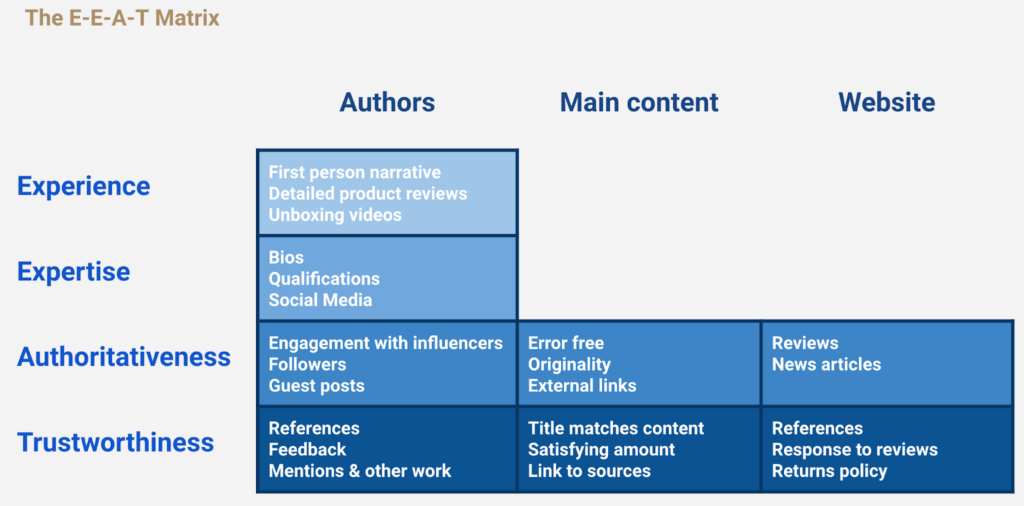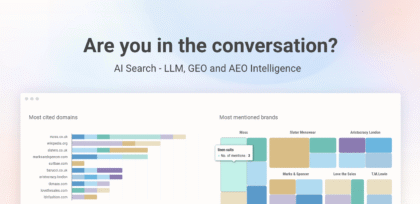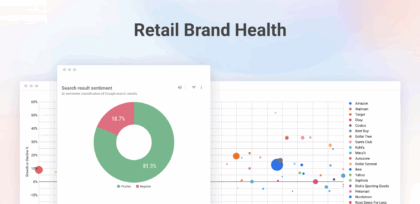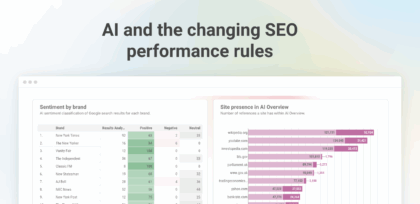How to turn AI Overviews from a traffic threat into your next organic growth opportunity
30 Apr 2025|5 MIN READ
Google's AI Overview (AIO) has thrown a serious curveball at traditional search strategies. What's happening is (fairly) straightforward: Google’s new AI-generated summaries are starting to answer more user queries directly inside the SERP, eliminating the need for prospects to click through to your carefully crafted content to find out the answers to their burning questions, leading to a drop in organic traffic.
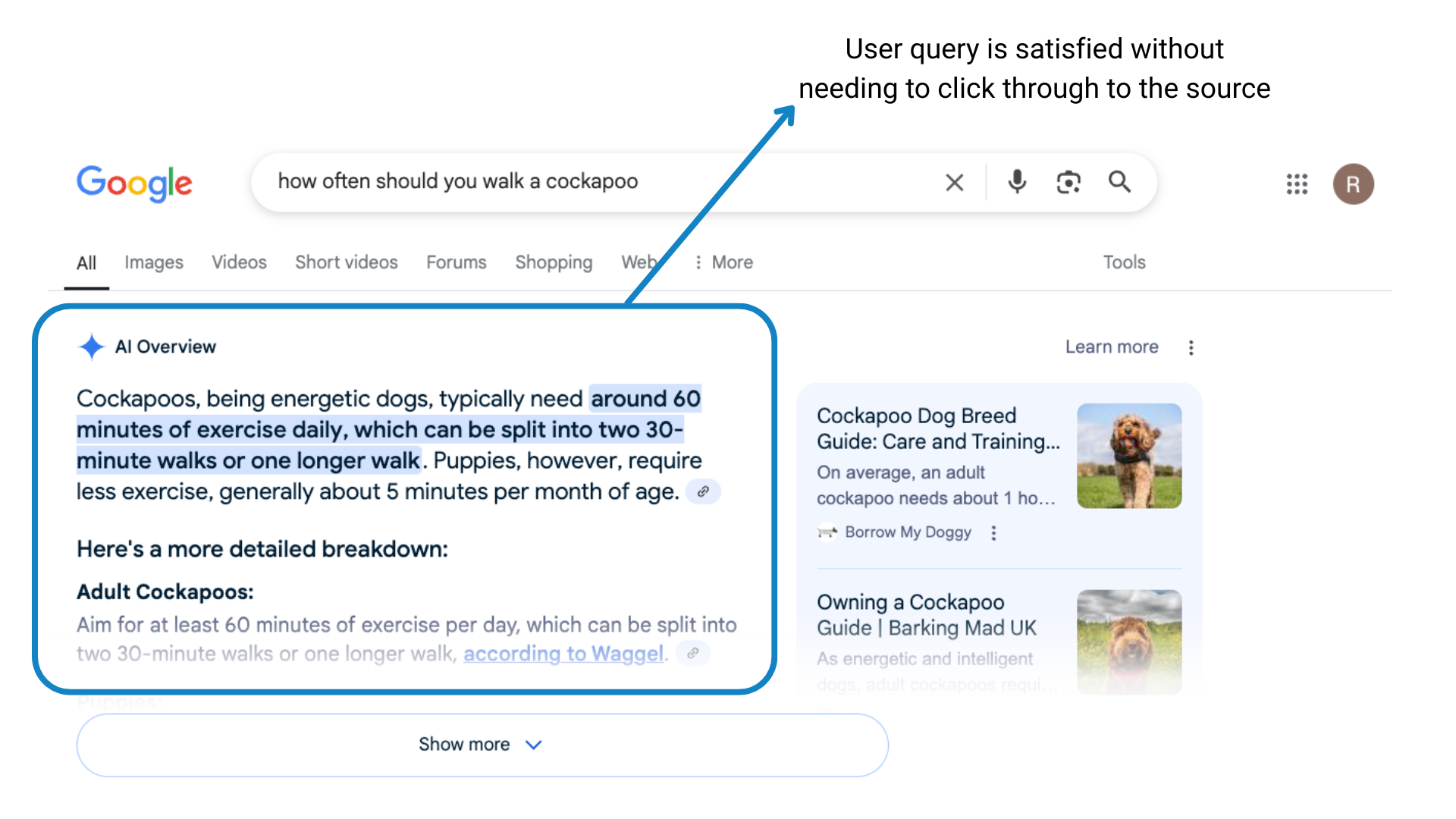
For companies that rely on organic search traffic to drive revenue, like online retailers or publishers, the stakes couldn't be higher. A recent study by Amsive revealed that click-through rates have decreased by up to 15.49% for queries where AI Overviews appear - a statistic that should make any SEO sit up and take notice. But AI Overviews don’t need to be the villain in this story. If leveraged in the right way, they could become your next major growth engine.
1. Get your content AI-ready using structured data & E-E-A-T principles
Treat Structured Data like an instruction manual for AI
Think of structured data as sending Google an instruction manual for your content. By enabling your content to be easily understood by Google crawlers, you increase your chances of being included in the AI Overview. While schema markup isn't a new concept, its role as a fundamental pillar of a robust SEO strategy has further highlighted it’s importance with the rise of AI Overviews. To ensure your content is primed for both traditional and AI-powered search, consider implementing the most relevant schema for your business. Here are a few key examples: These can include:
- FAQ Schema: Perfect for addressing common questions your audience asks. Make sure your FAQs are comprehensive, genuinely helpful, and send strong Quality Signals.
- Author Schema: Essential for establishing clear authorship and boosting your E-E-A-T, particularly important for content where expertise and author credibility are key.
- Media Schema: Crucial for enhancing visibility in visual search results, allowing your images and videos to be better understood and surfaced.
- Product Schema: Essential for any e-commerce website. Product schema includes pricing, ratings, reviews, and product descriptions, and hugely increases your chances of being included in rich results.
💡 Tip: To find the most relevant schema for your website, take a look at Google’s structured data markup guide or schema.org.
It's important to remember that the true power of structured data lies in the synergy between optimized schema code and the delivery of genuinely valuable, user-centric content which satisfies search intent. The backend (schema) and frontend (on-page text) must work together to achieve optimal search visibility.
Double down on E-E-A-T (Experience, Expertise, Authoritativeness, and Trustworthiness)
In the age of AI-driven search, E-E-A-T remains as important as ever. Google wants to summarize content from sources it trusts, so demonstrating this makes your website more likely to appear in AI Overviews. In an article for Search Engine Journal, Carolyn Shelby from Yoast states that E-E-A-T is “the defining factor in determining which sources AI-driven search results consider authoritative enough to cite”. She goes on to write, “to be cited in AI-driven answers, a brand needs to demonstrate undeniable expertise and establish itself as the authority in its field”, highlighting its importance.
Here are a few ways to demonstrate E-E-A-T:
- Showcase your team's expertise. Build detailed author bios packed with credentials to demonstrate that there are real people behind your content. For enterprise organizations, this means highlighting the genuine subject matter experts within your company rather than relying on the marketing team. Create detailed author bios that include job titles, qualifications, and relevant experience. To reinforce trust signals, link out to external profiles on places like such as LinkedIn, published work, and industry affiliations. You could even mark up their profiles using Author schema.
- Support expertise with external validation. These continue to serve as powerful trust signals for authoritativeness. Focus your link-building or Digital PR efforts on securing mentions from industry-leading publications and trusted sources within your sector. These endorsements not only elevate your site's authority but also serve as third-party validation of your content's value.
- Publish first-party data and original research. These are highly rated by Google and make you a prime candidate for inclusion in AI-generated answers. Unique data sets, proprietary insights, and original data signal deep topical knowledge — and are increasingly favoured in AI-generated results. When sharing this kind of content, use appropriate schema markup (e.g. Dataset, ImageObject, Article) to help Google understand the importance and provenance of your research.
2. Prioritize educational and informational content
Right now, AI Overviews are showing up most frequently on long-tail and informational queries, so creating genuinely educational content is a smart move. It’s not just helpful for users; it can also position your pages as trustworthy enough to be cited directly in AIO summaries. This means creating content like:
- Comprehensive guides that go beyond surface-level information
- Whitepapers that leverage your company's unique insights and data
- Case studies showcasing real-world applications and results
- Industry reports that establish your brand as a thought leader
SERP analysis tools can help you identify longer-tail opportunities where AIOs are missing or fail to consistently appear, presenting an opportunity for you to build content to appear in them. As AIOs continue to expand, we may find they start to show up in more middle-of-the-funnel and even bottom-of-funnel queries, including transactional ones, which means that SEOs will need to think further down the customer journey when it comes to content creation. This means developing rich, intent-matched content for every stage of the funnel, not just the top.
3. Diversify your traffic sources beyond Google
Relying solely on Google organic traffic has always been a risky strategy, but with AI Overviews in the mix, now is the time to adopt a more distributed approach to visibility.
Optimize for LLMs (Large Language Models)
Creating content specifically optimized to be cited by LLMs can open up new referral streams beyond traditional search. Google’s AI Overview isn’t the only AI-driven discovery platform to think about. LLMs like ChatGPT, Perplexity, Bing’s Copilot, and Gemini are establishing their own approaches to search and discovery, each with unique methods for indexing content and citing sources. These platforms often emphasize clarity, structure, and authoritative referencing to determine which content to cite and present to their users.
A recent report by Language Engine Advisory, Leoprd, showed that each LLM 'reads' brands differently, meaning businesses should develop specific content strategies for each major AI platform rather than taking a one-size-fits-all approach. Gemini, for example frequently sources information from a wider variety of places compared to Google, including academic reports, industry rankings and evidence backed data, whereas ChatGPT . prioritises content from editorial coverage and thought leadership.
Show up where the conversations are already happening
User-generated content platforms like Reddit, Quora, LinkedIn Pulse are experiencing a resurgence, and it’s no coincidence. As AI Overviews increasingly surface answers from real people (not just publishers), these platforms are becoming key players in both traditional SERPs and LLMs. For SEOs, this means actively participating in discussions on Quora, sharing insights on LinkedIn Pulse, and engaging with relevant Reddit communities (among others!). By contributing valuable content across these platforms, you not only drive traffic but also enhance your brand's authority, increasing the likelihood of being featured in AI-generated summaries. Remember, it's not just about being present - it's about being active and providing value where your audience seeks their information.
Rethink where ‘search’ actually happens
While Google continues to dominate traditional search, it isn’t the only place people search. Social media platforms like TikTok, Instagram, and YouTube Shorts aren’t just entertainment channels - they're fast becoming discovery engines in their own right, and operate on entirely different algorithms. For SEOs, this presents an opportunity to reach audiences who might never encounter your content through traditional search. TikTok in particular has become a powerful discovery engine for younger generations, with 1.5M monthly active users, it presents a new opportunity to build brand awareness and drive traffic independently of the Google ecosystem. If your content strategy stops at Google, you’re missing a huge chunk of the modern search landscape.
4. Coordinate teams across the marketing mix
Digital marketing strategies can no longer thrive in isolation. With AI Overviews fundamentally reshaping search results, SEOs must adopt a more integrated approach to digital and growth strategies. Increasingly, SEO success depends not only on traditional optimisation techniques but also on visibility across social channels and earned media, driven by the rise of FAST Content (First-person, Authentic, Social, and Trusted).
When SEO, PR, social media, and paid advertising teams work in isolation, opportunities are missed and resources are often wasted. The most successful responses to AI Overviews involve consistent messaging and coordinated efforts across all channels.
This alignment starts with shared goals and metrics. Rather than each team optimizing for their channel-specific KPIs, consider adopting overarching visibility and engagement metrics which encourage collaboration such as Share of Voice, brand mentions, and conversions. Its about orchestrating total brand presence across Paid, Earned, Shared, and Owned media - the PESO Model by Gini Dietrich nails this perfectly.
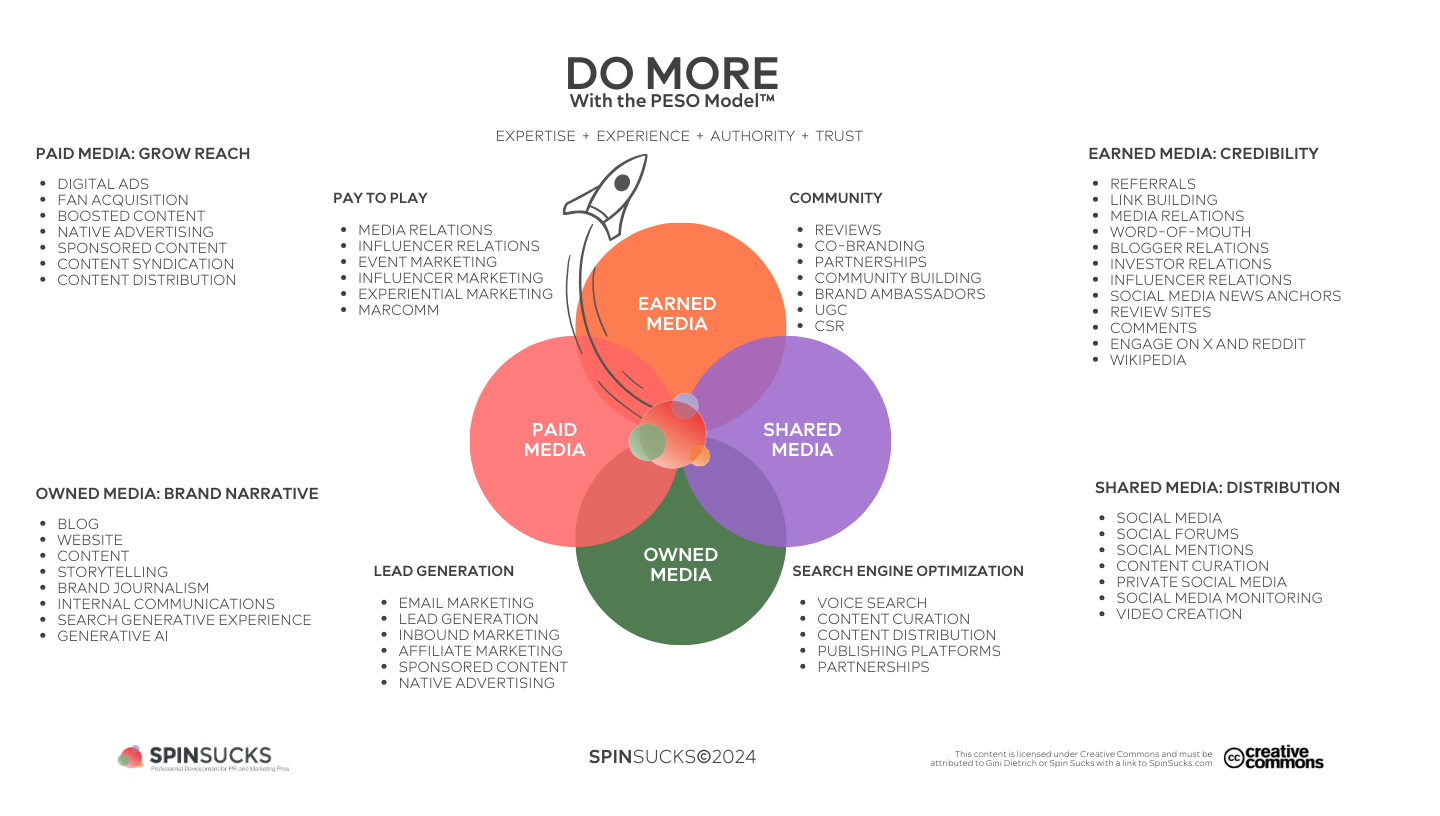
5. Track the impact of AI Overviews
Tracking how and when your content appears in AI Overviews is no longer a nice to have - its essential. Tools like Pi Datametrics AI Overview tracking, for example, are built exactly for this new reality, allowing you to easily track how often your content appears in AI-generated summaries.
Specialised tools like these allow enterprise SEOs to:
- Monitor when AI Overviews appear for target keywords
- Track whether your content or competitors are being cited within those overviews
- Measure changes in organic click-through rates when overviews are present
- Identify new content opportunities based on AI Overview performance
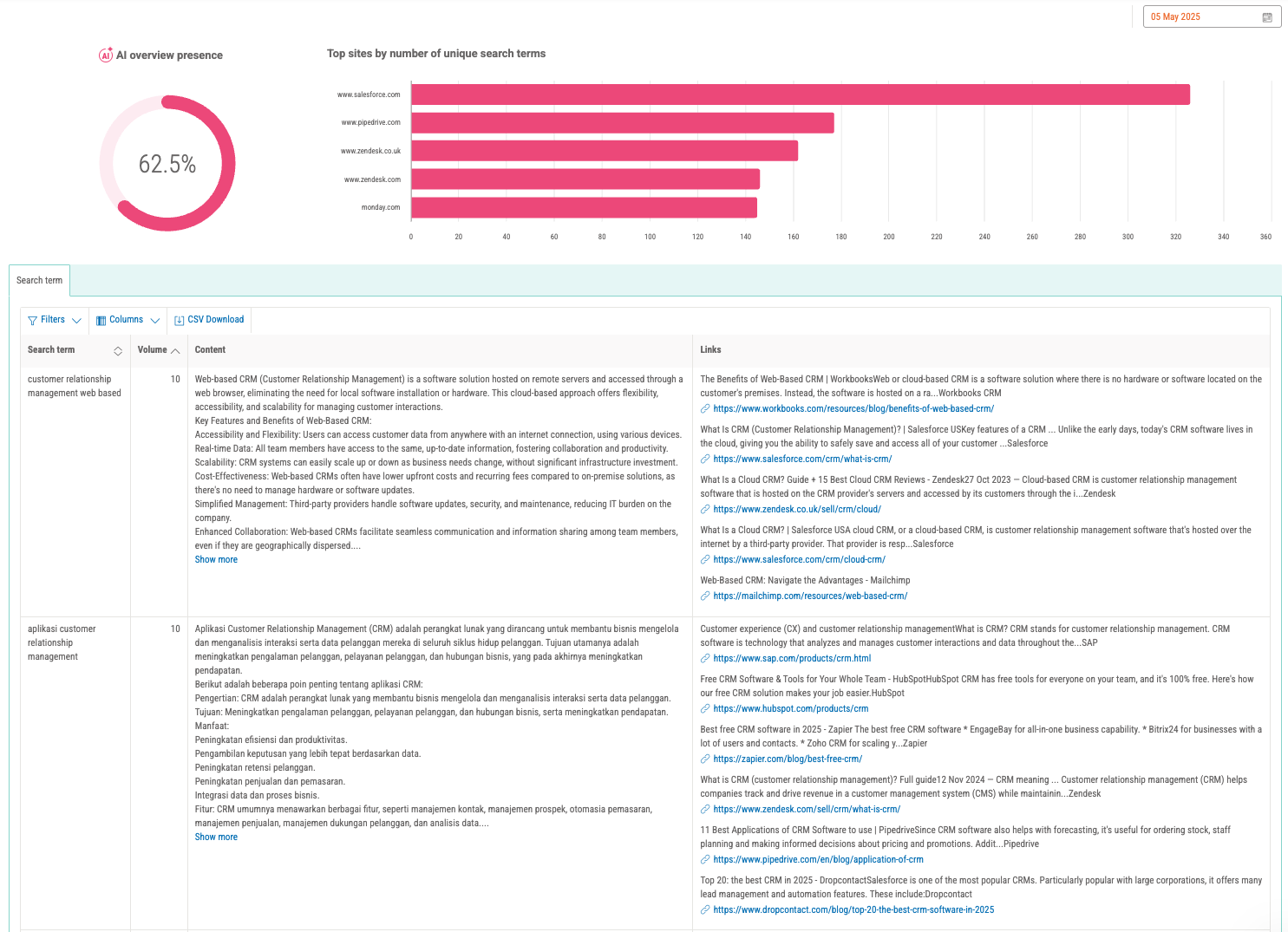
📷 Image: Pi Datametrics' AI Overview tracking capabilities shown inside Feature Explorer.
Final thoughts
AI Overviews aren’t going anywhere anytime soon. In fact, they’re continuing to gain visibility at the top of the SERP for an increasing number of search queries and intents. Instead of waiting to see how they will affect you, take proactive steps to adapt your enterprise SEO strategy for the AI age.
Instead of seeing them as a threat, see them as a new visibility opportunity, a new format or a new growth engine. By adapting now, you position your organization to benefit from, rather than be diminished by the continuing evolution of search.
🚀 Ready to turn AI Overviews into a growth engine for your brand?
Request demoNever miss a post
Join our mailing list and have our SEO news delivered straight to your inbox.
